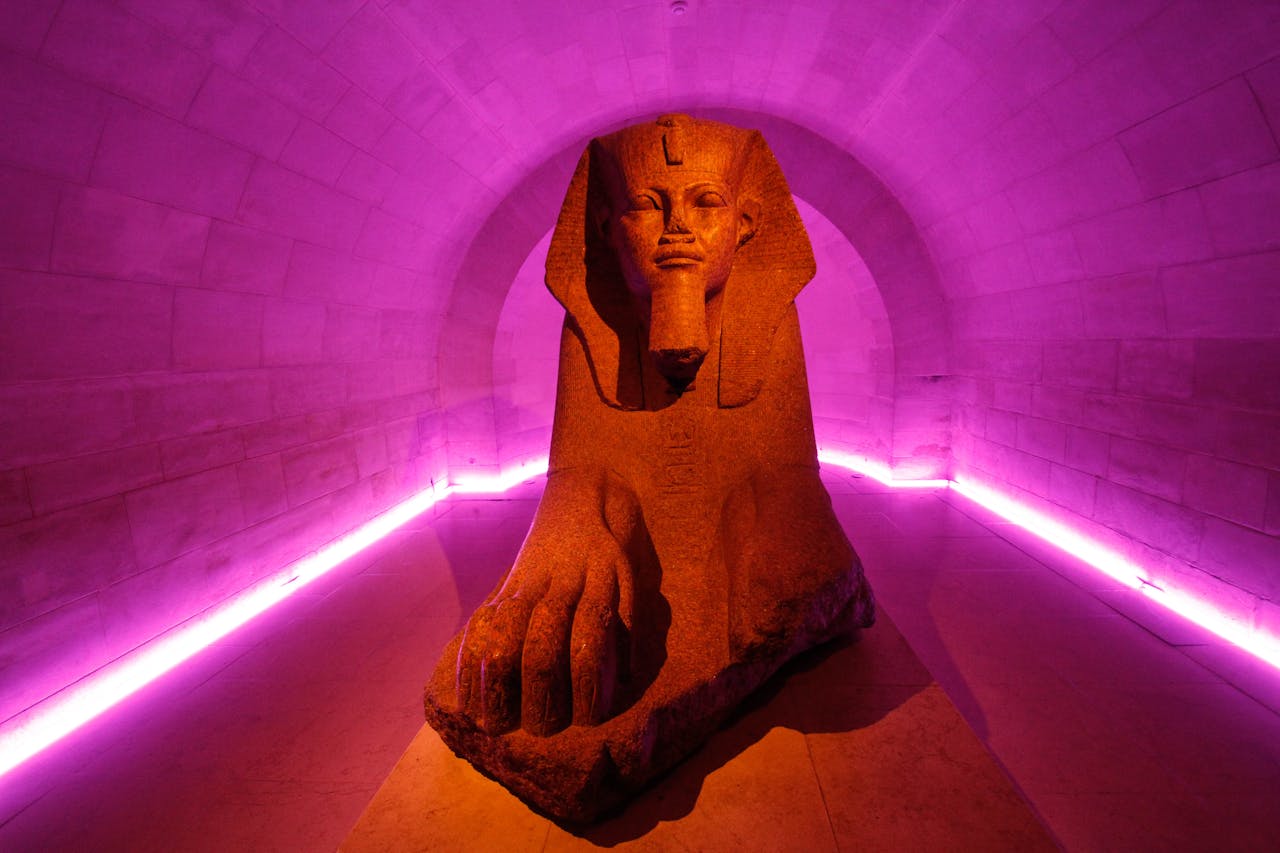The Egyptian Museum in Cairo stands as a beacon of history, attracting art and history enthusiasts from around the globe. Established officially in 1902 by French Egyptologist Auguste Mariette and relocating to its current site near Tahrir Square, the museum has long served as a sanctuary for ancient artefacts. Behind its doors lies a treasure trove of ancient Egyptian culture, reflecting both the grandeur and mystery of one of the world’s oldest civilisations.
A Glimpse into the Past
The museum was founded to preserve the vast collection of artefacts unearthed during the excavations of the 19th and 20th centuries. Among these finds are the iconic treasures from the tomb of Tutankhamun, discovered by Howard Carter in 1922. Over the years, the museum’s collection has expanded through further discoveries, acquisitions, and generous donations, making it an unparalleled repository of Egyptian antiquities. Despite facing challenges like limited space and outdated facilities, the museum remains a pivotal location for understanding Egypt’s rich past, even as the Grand Egyptian Museum promises to offer a more extensive exhibition space.
Highlights of the Collection
Tutankhamun’s Treasures
The Egyptian Museum’s most famous exhibit is undoubtedly the Tutankhamun collection. This young pharaoh’s legacy is immortalised through the stunning gold mask and the treasures from his tomb. These artefacts provide invaluable insights into the life and times of this boy king, capturing the imagination of all who visit.
The Royal Mummy Room
This room offers a rare opportunity to connect with ancient Egyptian royalty through their preserved remains. The mummified bodies in this collection are not just historical artefacts; they are individuals who once ruled a powerful civilisation. Viewing these mummies offers a profound connection to the past, providing a tangible link to the people who shaped history.
Akhenaten and Amarna Period Artifacts
The museum also houses artefacts from the Akhenaten and Amarna period, a fascinating era marked by religious upheaval and artistic innovation. Akhenaten’s reign saw the radical shift towards monotheism, worshipping the sun disk Aten. The art from this time reflects a departure from traditional styles, offering visitors a glimpse into an intriguing chapter of Egyptian history.
Ancient Egyptian Jewellery and Papyri
The museum’s collection of jewellery and papyri paints a vivid picture of daily life in ancient Egypt. From intricate necklaces and rings to ancient scripts and documents, these items reveal the craftsmanship and intellectual pursuits of a civilisation that valued beauty and knowledge. Each piece tells a story, offering insights into the cultural and social nuances of the time.
Architectural Marvel
The architecture of the Egyptian Museum itself contributes significantly to the experience. Built during a time when Egyptology was gaining international attention, the building embodies the splendour and historical importance of its contents. Its classical style, with high ceilings and spacious galleries, creates an environment that complements the grandeur of the artefacts it houses.
Reliving History
Visiting the Egyptian Museum Cairo is an unforgettable experience for anyone interested in history and art. It offers a comprehensive view of ancient Egyptian culture, with artefacts that span thousands of years. From the grandeur of Tutankhamun’s artefacts to the daily life relics, the museum offers visitors a chance to step back in time and witness the evolution of one of the world’s most influential civilisations.
Whether you are a seasoned historian or a curious traveller, this museum promises to enrich your understanding of ancient Egypt. Take the opportunity to explore its vast collection and immerse yourself in the stories of the past that continue to captivate audiences worldwide.
In summary, the Egyptian Museum in Cairo is more than just a holder of artefacts; it is a vital link to the past, a place where history comes alive and narratives of ancient times await those ready to listen.
